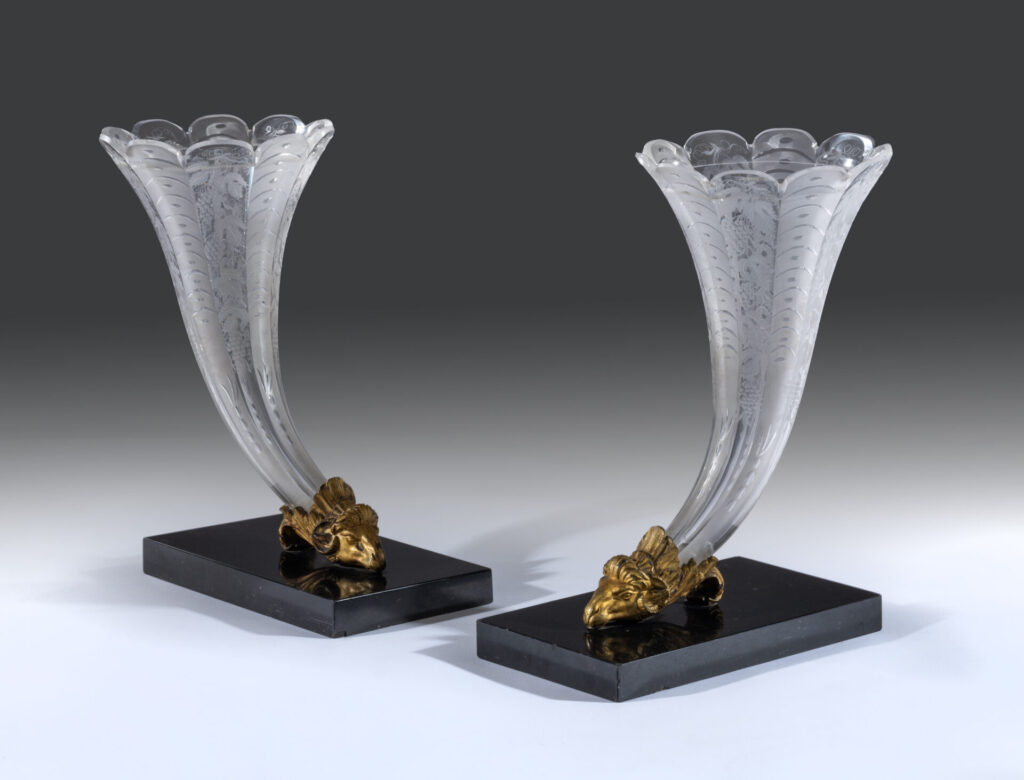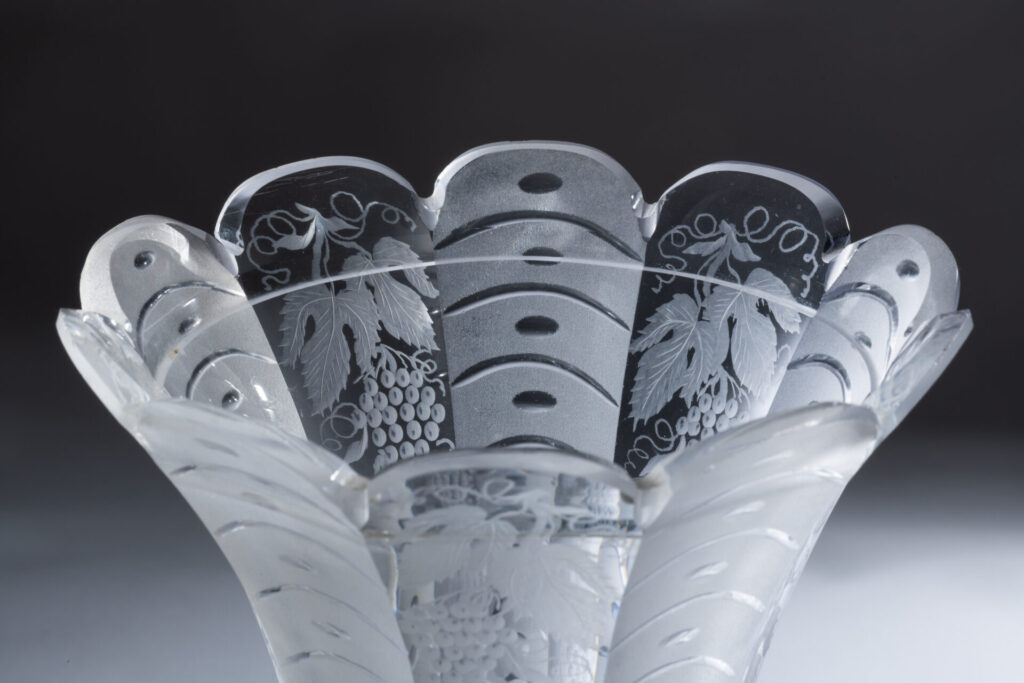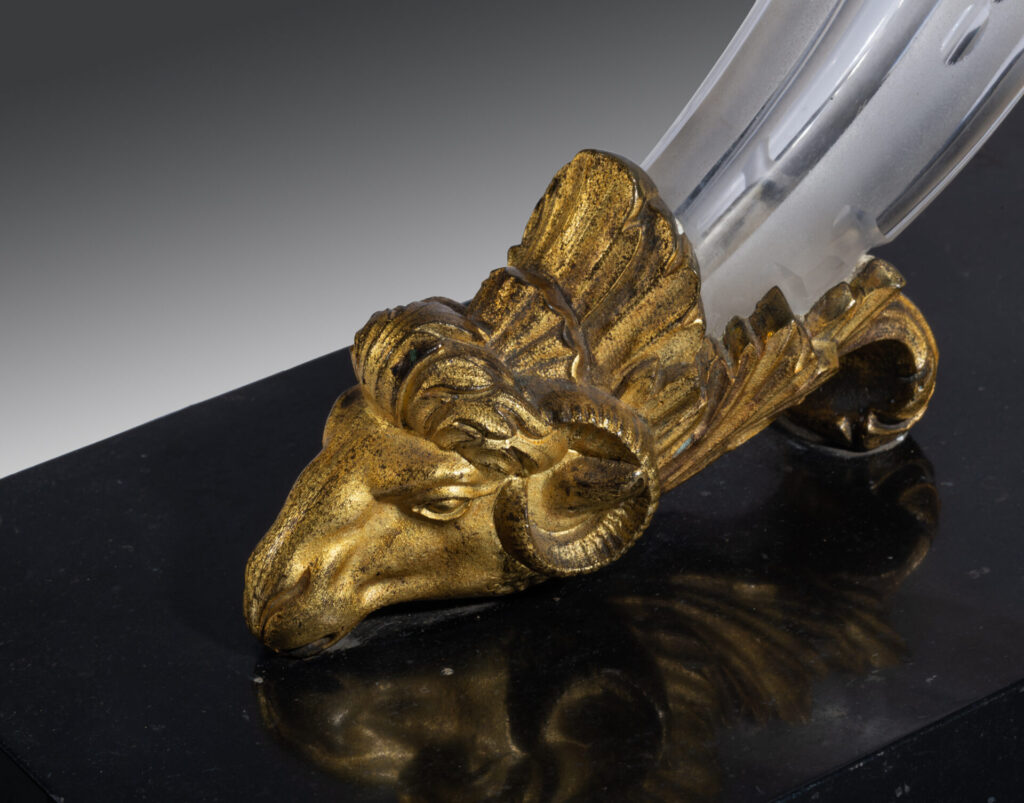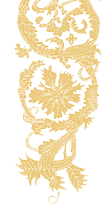Pair of William IV Glass Cornucopia



Pair of William IV Glass Cornucopia
English
circa 1830 - 1840
Pair of grand scale 19th century William IV etched glass cornucopia.
The large scale English cut and etched glass cornucopia are most fine and elegant. No breaks or scratches remarkably and the horns are mounted on finely gilt ormolu cast rams' heads.
The cornucopia are etched with vines and leaves and are raised on black slate marble.
Condition
Excellent
Literature
The earliest reference to cornucopia is found in Greek and Roman mythology, which dates back nearly 3,000 years. In classical antiquity, the cornucopia, from Latin cornu (horn) and copia (abundance), also called the horn of plenty, was a symbol of abundance and nourishment, commonly a large horn-shaped container overflowing with produce, flowers, or nuts.
Mythology offers multiple explanations of the origin of the cornucopia but one of the most well-known is a story relating to the Greek god Zeus, king of all the gods. As a baby, Zeus had to be hidden from his father, Cronus, who would consume all his children. Zeus was kept in a cave by the goat Amalthea (‘Nourishing Goddess’) who fed him and looked after him. Zeus accidentally broke off one of her horns while playing with his nursemaid and the horn then had the power to provide unending nourishment, as the foster mother had to the god.
In another myth, the cornucopia was created when Heracles (Roman Hercules) wrestled with the river god Achelous and ripped off one of his horns; river gods were sometimes depicted as horned. This version is represented in the Achelous and Hercules mural painting by the American Regionalist artist Thomas Hart Benton. Depictions of cornucopia are found everywhere in art and literature through the ages.
The cornucopia became the attribute of several Greek and Roman deities, particularly those associated with the harvest, prosperity, or spiritual abundance, such as personifications of Earth (Gaia or Terra); the child Plutus, god of riches and son of the grain goddess Demeter; the nymph Maia; and Fortuna, the goddess of luck, who had the power to grant prosperity. In Roman Imperial cult, abstract Roman deities who fostered peace and prosperity were also depicted with a cornucopia, including Abundantia, ‘Abundance’ personified, and Annona, goddess of the grain supply to the city of Rome. Hades, the classical ruler of the underworld in the mystery religions, was a giver of agricultural, mineral and spiritual wealth, and in art often holds a cornucopia.
In modern depictions, the cornucopia is typically a hollow, horn-shaped wicker basket filled with various kinds of festive fruit and vegetables. In most of North America, the cornucopia has come to be associated with Thanksgiving and the harvest. Cornucopia is also the name of the annual November Food and Wine celebration in Whistler, British Columbia, Canada. Two cornucopias are seen in the flag and state seal of Idaho. The Great Seal of North Carolina depicts Liberty standing and Plenty holding a cornucopia. The coats of arms of Colombia, Panama, Peru and Venezuela, and the coat of arms of the state of Victoria, Australia, also feature the cornucopia, symbolising prosperity.
Cornucopia motifs appear in some modern literature, such as Terry Pratchett's Wintersmith, and Suzanne Collins's The Hunger Games.
Dimensions
Height 31.00cm (12.2 inches)
Width 23.00cm (9.06 inches)
Depth 13.50cm (5.31 inches)
Stock No: 11489
Sold


